Application manual | How to lay lawn turf
Lay out a lawn easily with Turfquick Gras mat. Laying or sowing a new lawn can be difficult and time-consuming. If you sow lawn with seeds, it takes a long time and the seeds float around in puddles so that the lawn does not grow evenly.
This results in a lot of empty spots and a very large amount of water is required if it is to take off correctly, which it almost never does without having to sow grass several times. Rolling out traditional old rolling grass is very heavy and you also have to do this often within 12 hours. If you have, for example, 200 m2, you have to carry around and lay out 4 tons of grass, which is often delivered on pallets.
We use the fastest growing grass seed that grows anywhere
Our Grass Seed is a rapidly establishing grass seed mixture, designed to fill in troubled areas in lawns or grow an entirely new lawn quickly. Our seeds mixtures contains annual ryegrass which is the fastest germinating grass seed variety.
Our Lawns grown faster and can be overseeded with any premium seeds to establish a thick, beautiful lawn that will persist for years to come.

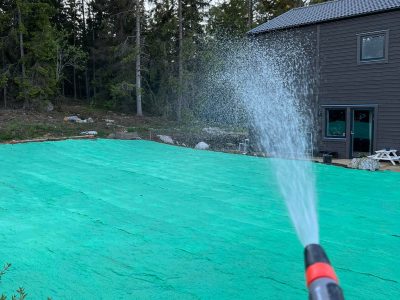
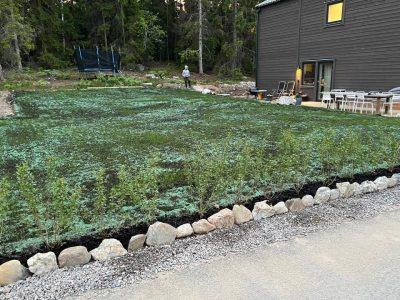

To have a successful lawn, it is important to do everything in the right order.
We guide you on the way to a new, green and beautiful lawn. This is how you lay out your lawn step by step to get a dense, thick, lush and green lawn!
For optimal growth, the lawn needs only four things (in the right balance) to grow…sunlight, air, water and nutrients. Reduce any of these, or provide too much of any, and the grass may die or simply suffer. In the right proportions, the grass will flourish, adding not only beauty to the landscape but also a clean and safe place to play. It has many advantages for the environment.
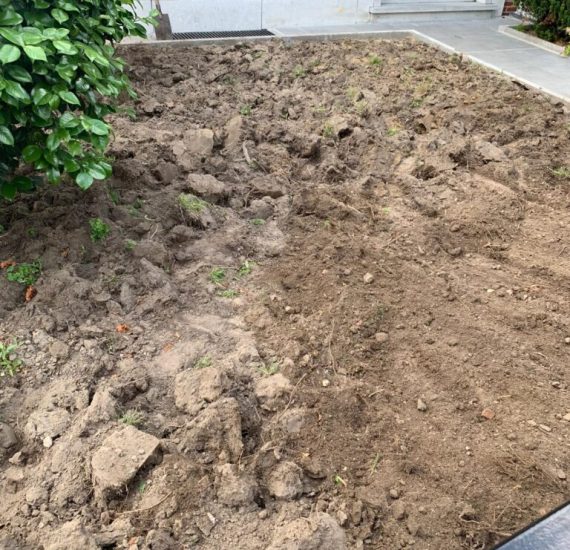
1. Remove old turf, plants and weeds
The first thing to do is clear the area where your new lawn is going to be laid.
Dig or rotavate to a depth of at least 15cm (20cm – 25cm is even better) and remove as much debris as possible – rubble, roots, stones etc.
ATTENTION! The area should be nutritious. Fertilise if necessary or read about the seeds that the eco fabric contains are not coated.
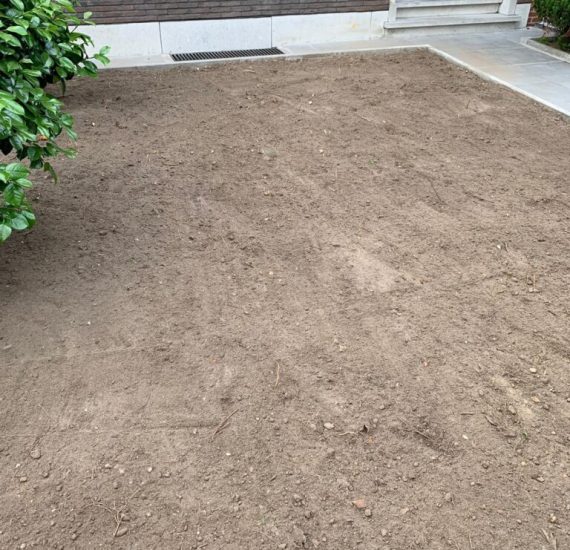
2. Ground preparation
By leaving the soil for a week, any sinkage will occur before the lawn is in place, allowing it to be rectified before laying. If weeds have been prevalent in the area, wait for the first flush of weeds to germinate and remove these before laying.

3. Level the area | Rake the soil
Lightly work the surface with a rake to create a fine tilth.
The flatter you can make the area, the better your lawn will look when it’s laid.
ATTENTION! Water the area well overnight before planting.
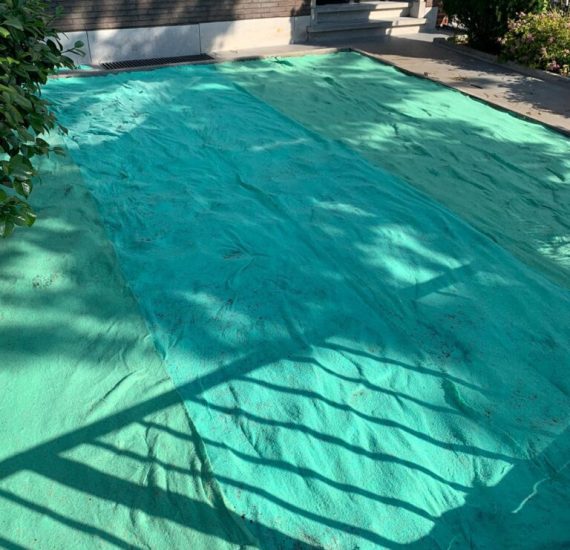
4. Roll out on the prepared surface
Roll out the mat on the prepared surface
You can easily shape by cutting the canvas with ordinary scissors.
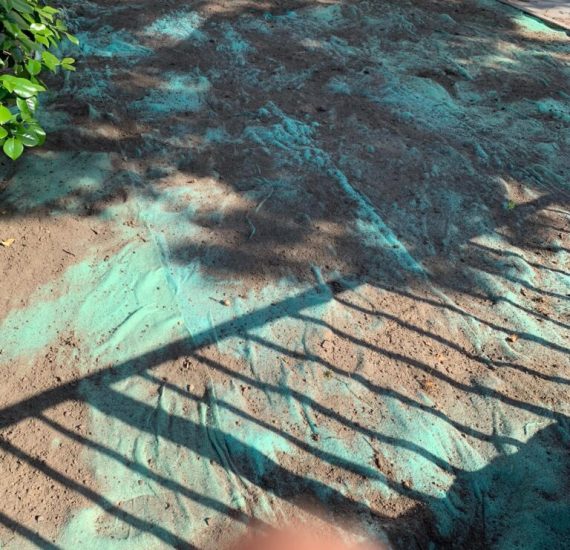
5. Cover with some soil!
Wrap the planting cloth with approx. 3-5 cm in the joints. Grass will only grow where the cloth covers the soil.
Cover a little with soil between 0.5 to 1 cm maximum so that nutrients bind better and the soil retains moisture more easily.
ATTENTION! Do not cover with more than 1 cm of soil.
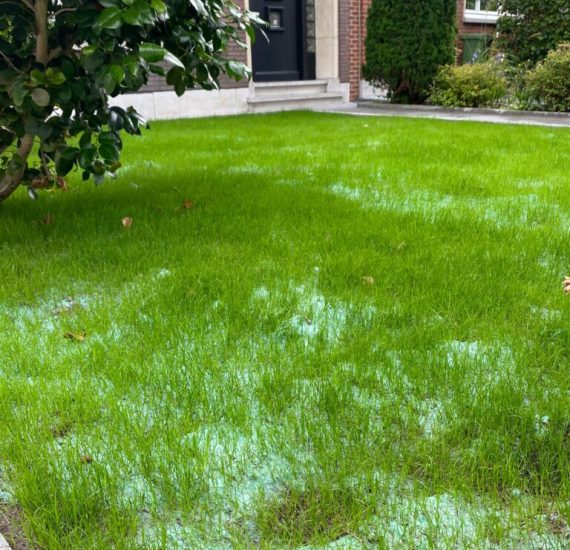
6. Keep watered | Water daily!
Once positioned, water frequently: 2/3 times a day until saturated each time. DO NOT apply a strong stream of water to the product. Keep the product constantly moist for the first three weeks.
Grass seed requires warmth, light and moisture to germinate. If the conditions are too dry in the first 2 weeks the seeds can die.
ATTENTION! Keep the surface moist until the grass has become about 5 cm high.
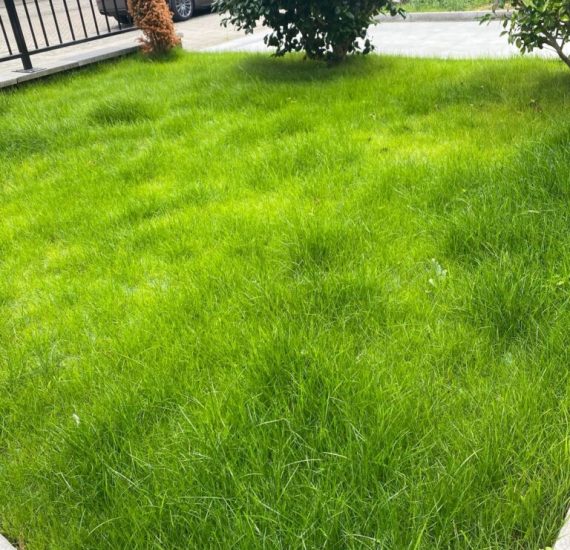
7. Result
Create the perfect lawn. Within a few weeks, you will have a lush, green and beautiful lawn.

8. Mowing!
Grass seed should germinate within 7 – 10 days. Once it reaches 8 – 10 cm long, start to cut the grass. Gradually reduce the height by 1cm each time you mow the lawn until you achieve your ideal mowing height.
Do not cut shorter than 4 cm the first time.
ATTENTION! Do not use fertiliser before the first cut, use organic fertiliser 15-20 days after planting the grass.
When you fertilise, the soil should be moist for the fertiliser to become available to the grass. The fertilisation helps keep weeds and moss away. Remember that it is better to fertilise little and often.
ATTENTION! Remember that you can only fertilise in connection with rain or irrigation.
Repair lawn with Turbo Patch Repair
Patches in lawns can appear for a number of reasons, and when they do, it is always advisable to repair them. Turfing bare patches will prevent weeds germinating in the patches, and of course, it looks much better.
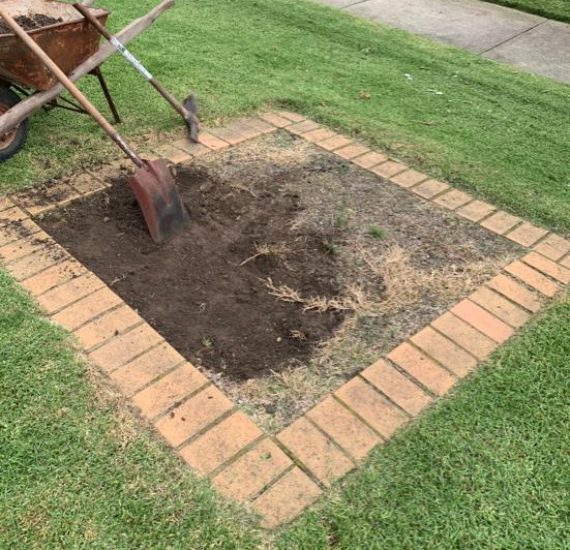
1 Prepare
Dig up the area to a 15-cm. depth, breaking up the clumps. (If the problem was caused by a spilled chemical such as gasoline or an herbicide, remove several inches of surface soil.)
Mix in topsoil to improve soil quality and help new sod or grass seed get off to a good start.
Rake and tamp to firm and level the surface to the surrounding lawn.
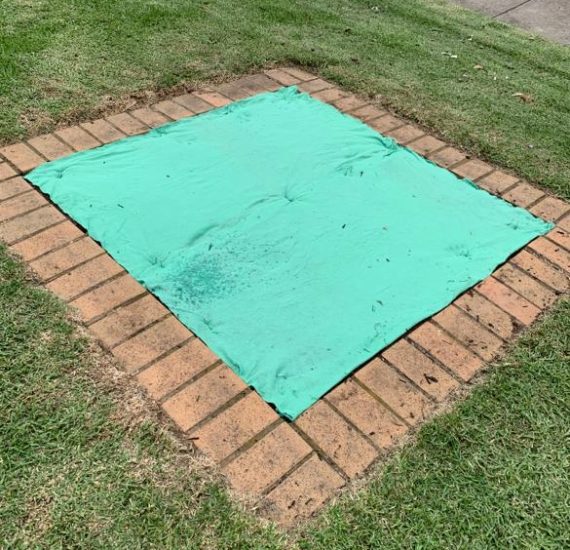
2 Roll out!
Water the day before you are going to install your lawn rollers. After that, the lawn must be watered every day until rooting.
Please do not cover with more than 1 cm of soil.

3 Water the area well!
Once you have made the repairs, follow these steps.
You can keep your lawn as healthy and green as possible.
Using a fine spray from a hose, keep the soil moist, but not drenched. Preventing the soil from drying out allows the roots from the grass seed to enter the soil.

4 Perfect Result - Mow the lawn
Once the grass is established and growing well, fertilise it with a general or organic lawn fertiliser and begin mowing the patch with the rest of the lawn.
Monitor the area closely during the first year.
